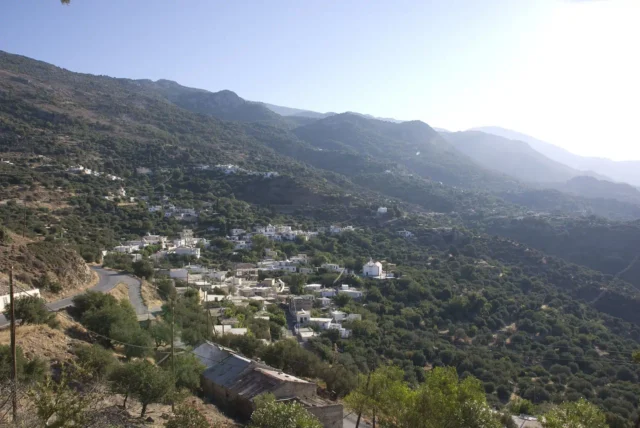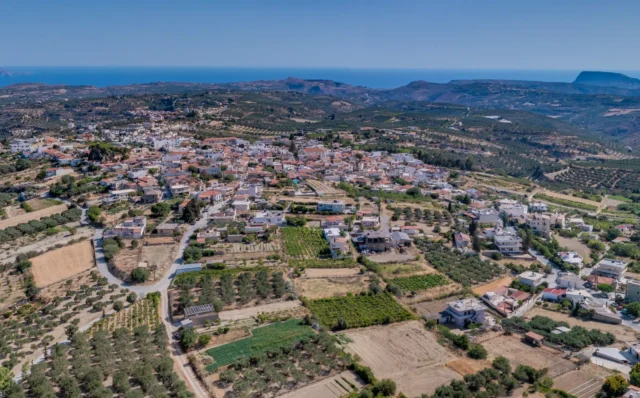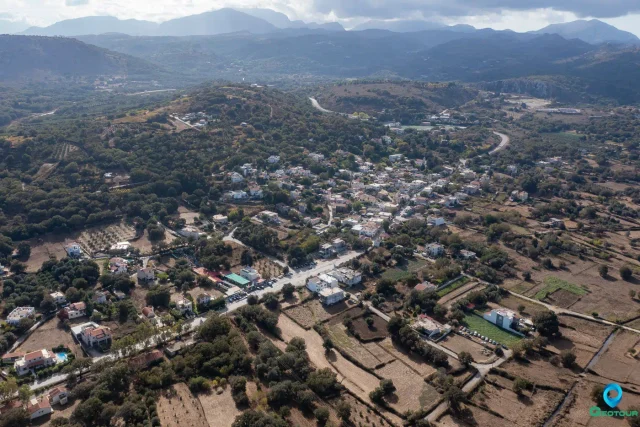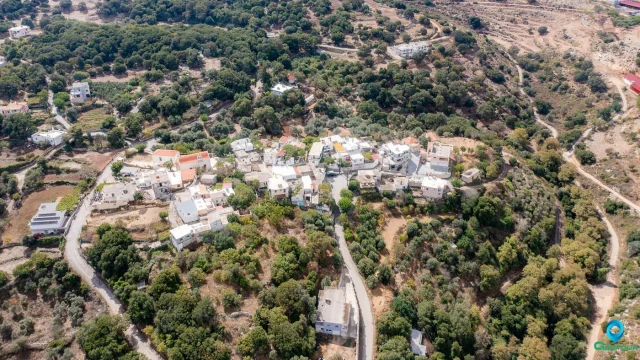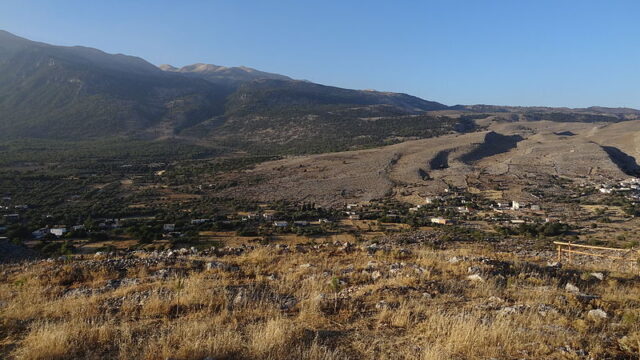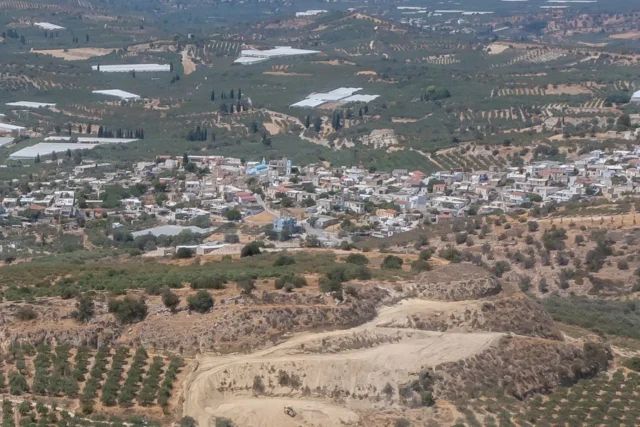829
listings found
Categories
Active filters:
Amiras, Viannos
Amiras, a small village nestled on the southern slopes of Mount Dikti in Crete, boasts a rich history dating back to the Arab occupation of Crete (824-961 AD). Its name, derived from the Arabic word for "ruler," suggests it may have been the site of an Arab amir's residence. The village is tragically known for the 1943 massacre of 117 male residents by Nazi forces, a somber event commemorated by an annual memorial service. Today, Amiras maintains an agricultural economy, cultivating early vegetables and producing olive oil. Its Cultural, Athletic, and Educational Association actively contributes to social events and cultural projects, enriching the community's vibrant spirit. Despite its tragic past, Amiras remains a testament to resilience and the enduring power of community.
Episkopi, Chersonissos
Episkopi, a village near Heraklion, Crete, has a long history dating back to the Minoan era. The village's name, meaning "bishopric", reflects its role as the seat of the Bishop of Hersonissos after the Byzantine era. It has numerous Byzantine and post-Byzantine churches, including the 11th-century Panagia Kera-Limniotissa and the 14th-century Agios Ioannis with Venetian-era frescoes. Episkopi also has a war museum and a municipal park.
Skalani, Heraklion
Skalani is a settlement located in the Heraklion regional unit on the island of Crete, Greece. It belongs to the Municipality of Heraklion
Armenoi, Rethymno
Armenoi, a traditional village in Rethymno, Crete, boasts a rich history dating back to the Minoan civilization. Excavations have revealed a Late Minoan cemetery, and the village's name is linked to Armenian soldiers who settled there in the 10th century.
During the Venetian period, Armenoi was divided into Ano and Kato Armenoi. The village endured a turbulent World War II era, with the Germans establishing a military camp in the area. Despite the hardships faced, Armenoi has thrived, maintaining its cultural heritage and developing a diverse economy.
Armenoi is home to several notable churches and has a strong educational tradition, with one of the first schools in the prefecture established in Armenoi in 1881. Today, Armenoi is a vibrant community with a mix of agricultural and commercial activities.
Ano Moulia, Gortyna
Ano Moulia is a settlement located in the Heraklion regional unit on the island of Crete, Greece. It belongs to the Municipality of Gortyna
Panasos, Gortyna
Panasos is a settlement located in the Heraklion regional unit on the island of Crete, Greece. It belongs to the Municipality of Gortyna
Petrokefali, Phaistos
Petrokefali, a village in the Municipality of Phaistos, Crete, has a long history, dating back to Venetian censuses where it was recorded as Petrochieffali. The village is located at the 59.3rd kilometer of the road to Matala. In 2021, its population was 813. The inhabitants are mainly engaged in agriculture, particularly olive growing and the cultivation of citrus fruits and early vegetables. Historically, the area was also known for rice cultivation. Petrokefali has a Cultural Association of Ladies, an Adult Education Center, a kindergarten, and a primary school. The village is also known for its connection to the Cretan Revolution against the Ottomans, particularly through figures like Michael Kourmoulis and Xopateras. The abandoned village of Flambanochori, located south of Petrokefali, is believed to have been deserted due to the devastating plague of 1592.
Listaros, Phaistos
Listaros, a small village nestled in the Asterousia Mountains of southern Crete, boasts a rich history dating back to the 16th century. First mentioned in historical records from 1577, the village was designated as "Vakoufiko" during the Ottoman period, with its income supporting religious institutions and charitable works. Archaeological surveys in the 1980s revealed the village's strategic location near a spring, surrounded by fertile fields and diverse vegetation. Ethnographic research highlighted the importance of agriculture, grazing, and burning in shaping the landscape, as well as the significance of community ties and human-land interactions. Despite challenges posed by red soils requiring consistent irrigation, Listaros and its inhabitants have thrived for centuries, showcasing the resilience and adaptability of human communities in mountainous environments.
Ano Malakion, Rethymno
Located 20km from Rethymno, Crete, at 420m altitude, this village's history is tied to the former settlement of Archontika and Venetian censuses. Its main landmark is the "Tower of Syggelos," a 17th-century Venetian feudal complex with a three-story tower and an olive press. Other sites include Byzantine churches like Agios Georgios Methystis (c. 1000 AD), the ruins of an Early Christian basilica, and a former primary school, all designated historical monuments. Local lore mentions the "Cave of the 40 Michaels."
Pompia, Phaistos
Pompia is a settlement located in the Heraklion regional unit on the island of Crete, Greece. It belongs to the Municipality of Phaistos
Plora, Gortyna
Plora, a village in Gortyna, Crete, sits on Asterousia's foothills at 180m altitude. Likely named after ancient Pyloros, its ruins lie west of the village. First mentioned in 1583 with 167 residents, Plora's economy centers on olive cultivation, with vast groves and oil production. The Plorianos River dam supports citrus farming. Religious sites include Despotis Christos, Annunciation churches, and Agios Antonios, Agios Georgios o Kalamiaris, and Agios Panteleimon chapels. The 2021 population was 194.
Vasilika Anogeia, Gortyna
Vasilika Anogeia is a settlement located in the Heraklion regional unit on the island of Crete, Greece. It belongs to the Municipality of Gortyna
Zouridi, Rethymno
A designated traditional settlement 19.5 km southwest of Rethymno at an altitude of 260 meters, offering panoramic views. First mentioned as Suridhi in 1577, its history includes Venetian feudal lords and significant growth during the Ottoman period. It was home to chieftain Stavrianos Biris and a regional educational center with its school of 1872. Archaeological findings include a Late Minoan III tomb and Roman remains. Key sites are the church of Agios Panteleimonas and the 14th-century frescoes in Christochori.
Anopoli, Sfakia
Anopoli is a settlement located in the Chania regional unit on the island of Crete, Greece. It belongs to the Municipality of Sfakia
Sempronas, Platanias
Sempronas is a settlement located in the Chania regional unit on the island of Crete, Greece. It belongs to the Municipality of Platanias
Lochria, Amari
Lochria is a settlement located in the Rethymno regional unit on the island of Crete, Greece. It belongs to the Municipality of Amari
Kalochorafitis, Phaistos
Kalochorafitis, a village in Crete's Phaistos Municipality, is known for its historic significance. First mentioned in 1399, the village features the well-preserved 15th-century chapel of Agios Georgios o Methystis, adorned with frescoes. Located 64 kilometers from Heraklion, it was mentioned by Barozzi in 1577 and Castrofilaca in 1583 as Caloghorafici/Caloghorafiti. The name derives from "good field," referencing the area's first settler. The village's population has fluctuated over time, from 108 in 1583 to around 115 today.
Sellia, Agios Vassilios
Sellia is a settlement located in the Rethymno regional unit on the island of Crete, Greece. It belongs to the Municipality of Agios Vassilios
Galia, Phaistos
Galia, a historic village in Crete's Messara plain, dates to the Venetian era (1577). Its name derives from the Greek word for milk, possibly linked to its first church. The village experienced population shifts during Ottoman rule, notably the 1834 Egyptian census when no Christians were recorded. Galia later repopulated, growing after 1920 with residents from Vorizia. Its peak population reached 1029 in 1961, declining to 916 by 2011. Today, Galia thrives on agriculture (olives, vegetables, livestock, beekeeping) and hospitality. Located 5km northwest of Moires and 57.3km from Heraklion, it offers amenities like schools, churches (Agios Georgios), and attracts tourists seeking authentic Cretan experiences near archaeological sites and the Ida mountains.









